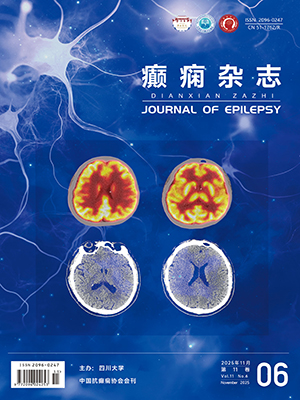Objective To develop a behavioral assessment scale for medication management plans in women of childbearing age with epilepsy and to test its reliability and validity. Methods Based on the Theory of Planned Behavior, a pool of questionnaire items was initially drafted through literature review and focus group discussions. A two-round Delphi expert consultation was conducted with 15 experts to form a test version of the behavioral assessment scale for medication management plans in women of childbearing age with epilepsy (including 27 items and 5 dimensions). Convenience sampling was used to conduct surveys among women of childbearing age with epilepsy in some tertiary hospitals in Chuxiong, Shenzhen and Wuhan from February to May 2024 (the first time) and from June to October 2024 (the second time). Results The effective recovery rates of the two rounds of questionnaires were 95.5% and 94.6%, respectively. The final scale included 24 items and 5 dimensions, with good reliability and validity: the content validity index (S-CVI) was 0.934, Cronbach's α coefficient was 0.876, split-half reliability was 0.819, and test-retest reliability was 0.901; exploratory factor analysis extracted 5 factors (cumulative variance explained rate 73.97%, item load 0.42~0.85), and confirmatory factor analysis showed that the model had good fit (χ2/df=1.849, RMSEA=0.075, CFI, GFI, AGFI, IFI, TLI all>0.85). Conclusion The scale meets the reliability and validity standards and can be used to assess the medication management plans and behaviors of women of childbearing age with epilepsy.
Citation:
WU Yueting, ZI Wenyan, XI Li, GAO Gai, ZHONG Yinqin, LI Wenwu, LI Cang, DONG Zimei. Development and validation of behavioral Assessment scale of medication management plan for female epileptic patients of childbearing age. Journal of Epilepsy, 2025, 11(4): 362-368. doi: 10.7507/2096-0247.202504008
Copy
Copyright ? the editorial department of Journal of Epilepsy of West China Medical Publisher. All rights reserved
| 1. |
|
| 2. |
|
| 3. |
|
| 4. |
李彥霖. 住院女性癲癇病例特點及危險因素分析. 山東大學, 2022, 碩士學位論文.
|
| 5. |
|
| 6. |
Beniczky S, Trinka E, Wirrell E, et al. Updated classification of epileptic seizures: Position paper of the International League Against Epilepsy. Epilepsia, 2025, Apr 23. Online ahead of print.
|
| 7. |
|
| 8. |
|
| 9. |
|
| 10. |
Chalès G. How should we manage asymptomatic hyperuricemia?Joint Bone Spine, 2019, 86(4): 437-443.
|
| 11. |
|
| 12. |
|
| 13. |
吳明隆. 結構方程模型: AMOS的操作與應用(第2版). 重慶: 重慶大學出版社, 2010: 236-237.
|
| 14. |
|
| 15. |
李崢, 劉宇. 護理學研究方法(第2版). 北京: 人民衛生出版社, 2018.
|
| 16. |
|
- 1.
- 2.
- 3.
- 4. 李彥霖. 住院女性癲癇病例特點及危險因素分析. 山東大學, 2022, 碩士學位論文.
- 5.
- 6. Beniczky S, Trinka E, Wirrell E, et al. Updated classification of epileptic seizures: Position paper of the International League Against Epilepsy. Epilepsia, 2025, Apr 23. Online ahead of print.
- 7.
- 8.
- 9.
- 10. Chalès G. How should we manage asymptomatic hyperuricemia?Joint Bone Spine, 2019, 86(4): 437-443.
- 11.
- 12.
- 13. 吳明隆. 結構方程模型: AMOS的操作與應用(第2版). 重慶: 重慶大學出版社, 2010: 236-237.
- 14.
- 15. 李崢, 劉宇. 護理學研究方法(第2版). 北京: 人民衛生出版社, 2018.
- 16.




